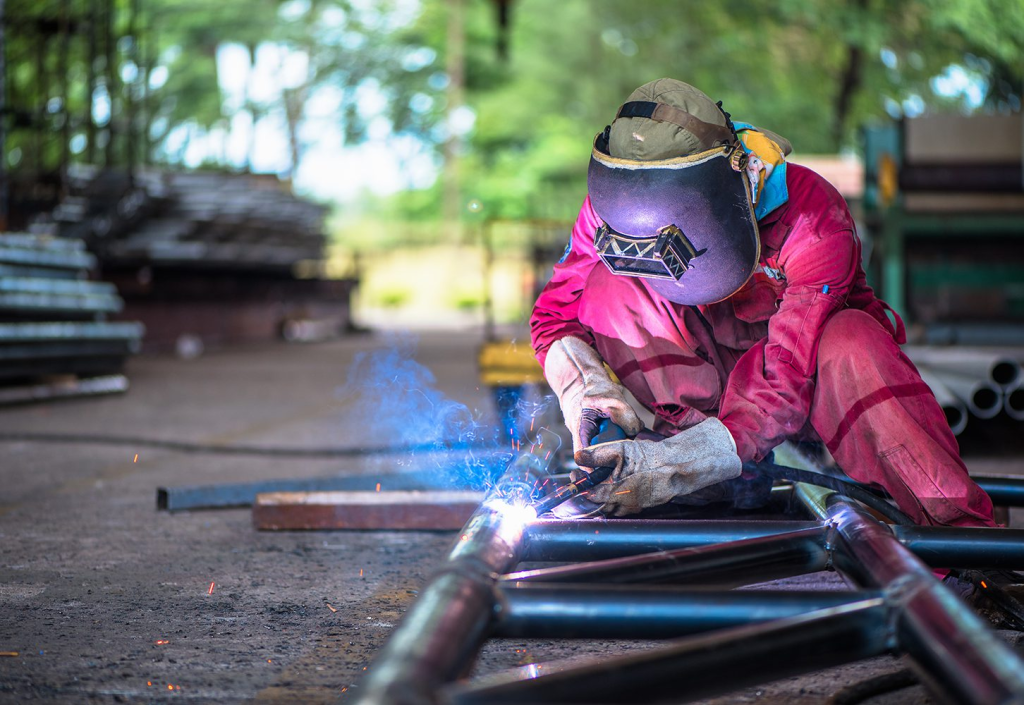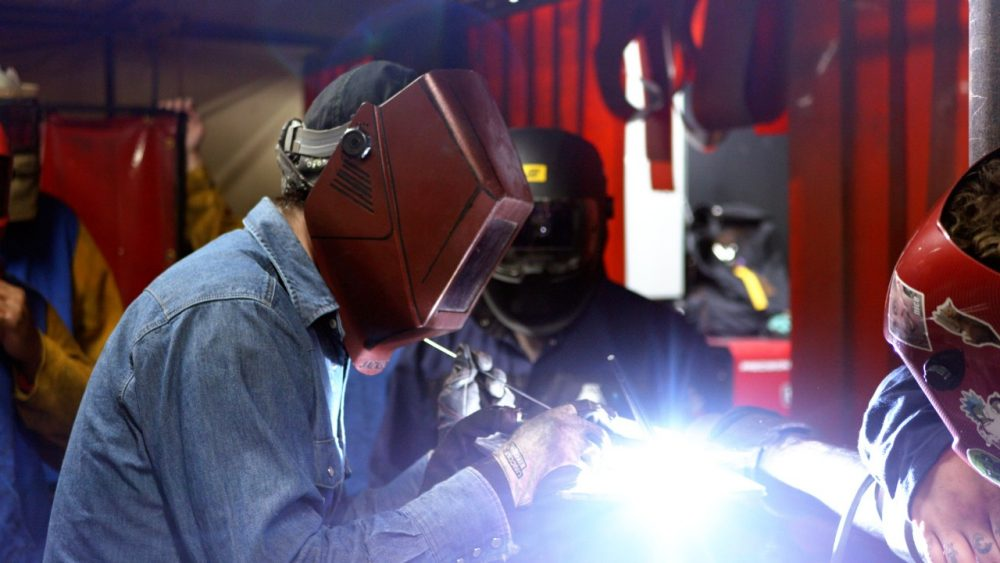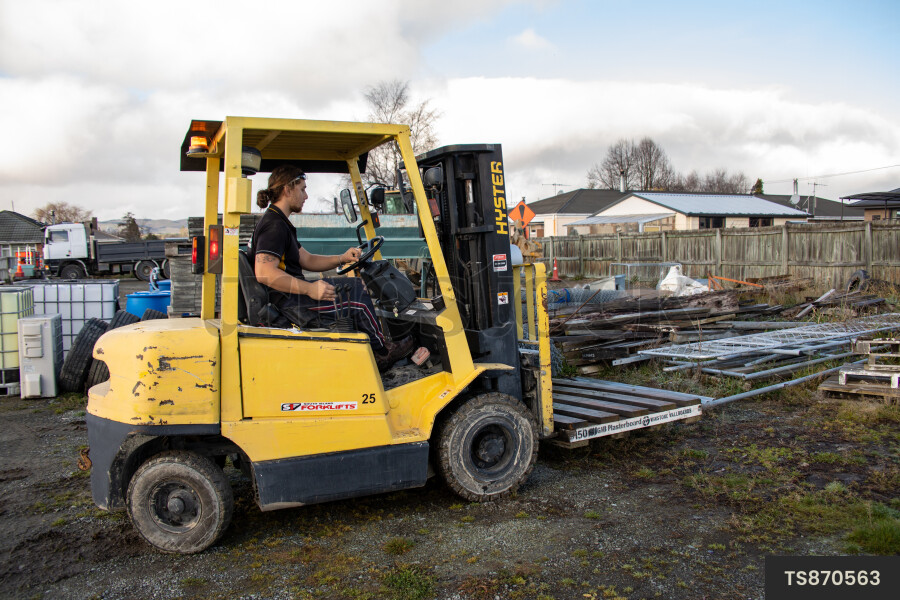In a country built on steel, pipelines, and innovation, welders are the hands that hold America together. From skyscrapers and ships to airplanes and bridges, nearly every major industry relies on skilled welders to join and repair the structures that power modern life.
Yet despite being one of the most essential trades, the U.S. faces a massive shortage of qualified welders — a gap that’s growing every year. For people seeking a stable, hands-on, and high-paying profession, welding offers a rare mix of job security, career growth, and personal satisfaction.
This guide explores what welders do, how to enter the field, and what your career path could look like — from your first spark to becoming a master of the trade.

Why Welding Matters More Than Ever
Welding isn’t just about fusing metal — it’s about building the backbone of the modern world. The U.S. Bureau of Labor Statistics estimates that demand for welders, cutters, and fabricators will remain strong through the next decade, driven by infrastructure renewal, clean energy projects, and advanced manufacturing.
From repairing bridges to constructing wind turbines, welders are essential to nearly every sector:
- Construction: Building and maintaining skyscrapers, pipelines, and transportation systems.
- Manufacturing: Creating parts for vehicles, appliances, and industrial machinery.
- Shipbuilding and Aerospace: Working with precision metals and high-safety standards.
- Energy: Supporting oil, gas, and renewable energy projects like solar farms.
In short, welding isn’t disappearing — it’s evolving, with new technologies like robotic welding and laser systems expanding opportunities for trained professionals.
What Does a Welder Actually Do?
At its core, welding involves joining metal pieces using heat, pressure, or both. Welders read blueprints, set up equipment, inspect materials, and ensure their welds meet safety and quality standards.
Common types of welding include:
- MIG (Metal Inert Gas): Fast and versatile, ideal for beginners and general fabrication.
- TIG (Tungsten Inert Gas): Used for high-precision and aesthetic welds on thinner metals.
- Stick Welding: Popular for outdoor and construction work due to its portability.
- Flux-Cored Arc Welding: Suited for heavy-duty industrial applications.
Each method requires skill, focus, and practice, but once mastered, it opens doors to specialized, high-paying work.
How to Become a Welder: Step-by-Step Guide
You don’t need a college degree to become a welder — just the right training and motivation. Here’s how to get started:
- Finish High School or Earn a GED
Welding requires strong fundamentals in math, physics, and blueprint reading. Shop or metalworking classes can also help build early skills. - Enroll in a Welding Program
Technical schools and community colleges offer certification or diploma programs in welding, typically lasting 6 months to 2 years. These courses cover theory, hands-on practice, and safety protocols. - Get Certified
Certifications are crucial for advancing your career. The American Welding Society (AWS) offers recognized credentials such as Certified Welder (CW) or Certified Welding Inspector (CWI). Employers often require these for specialized or union jobs. - Start as an Entry-Level Welder or Apprentice
Begin with simple tasks like assisting senior welders, learning equipment maintenance, and perfecting basic welds. Many companies or unions offer paid apprenticeships, allowing you to earn while you learn. - Gain Experience and Specialize
Once you’ve mastered core techniques, you can specialize in high-demand areas like aerospace welding, underwater welding, or pipe welding, each offering premium pay rates.
Career Development: From Apprentice to Master Welder
Welding is a career that grows with your skill and experience. Here’s a typical progression:
- Apprentice Welder (0–2 years)
- Focus: Learn welding basics, safety, and equipment use.
- Earnings: $18–$25/hour.
- Key Goal: Build speed, accuracy, and confidence.
- Journeyman Welder (2–5 years)
- Focus: Work independently on projects, follow blueprints, and meet code standards.
- Earnings: $25–$35/hour.
- Key Goal: Earn AWS certifications and expand into advanced welding processes.
- Master or Certified Welding Inspector (5+ years)
- Focus: Supervise teams, inspect welds, and manage projects or fabrication shops.
- Earnings: $70,000–$120,000 per year.
- Key Goal: Transition from hands-on work to leadership or quality control roles.
Some welders go on to start their own contracting businesses or teach at trade schools, combining technical skill with entrepreneurship.
Skills Every Great Welder Needs
Success in welding takes more than just holding a torch. The best welders combine technical precision with practical strengths like:
- Attention to detail: Even a small error can weaken a joint or fail an inspection.
- Physical stamina and coordination: Welding can involve long hours, tight spaces, or high heat.
- Problem-solving: Adapting to different materials and conditions on the job.
- Commitment to safety: Understanding hazards like fumes, sparks, and high temperatures.
As industries adopt new technologies, digital literacy and automation knowledge are becoming increasingly valuable too.
Job Outlook and Income Potential
The welding profession remains one of America’s most stable and well-paid blue-collar careers. According to recent data, the median annual salary for welders is around $50,000, but specialized welders — such as underwater or pipeline professionals — can make $100,000 or more annually.
The demand for welders is especially high in states like Texas, California, Ohio, and Florida, where manufacturing and construction projects continue to expand.
With the aging workforce and infrastructure renewal projects ahead, new welders are entering a market eager to hire and train.

Final Thoughts: Building a Future That’s Solid as Steel
Welding isn’t just a job — it’s a craft that combines art, science, and purpose. Every weld you make contributes to something lasting, whether it’s a bridge, a vehicle, or a power plant.
If you enjoy working with your hands, take pride in visible results, and want a career that offers growth, respect, and financial independence, welding may be the perfect path for you.
The sparks you create today can light the way to a powerful future. 🔧🔥



